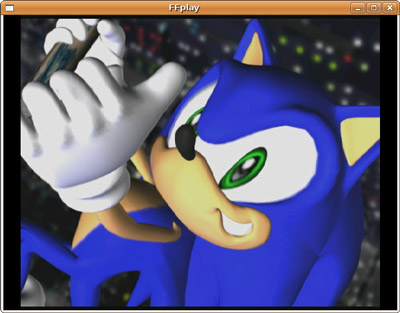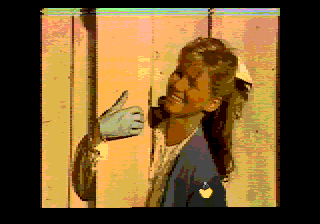FFmpeg now includes support for the Sofdec middleware format thanks to Aurel Jacobs and Mans Rullgard, as well as everyone who has made FFmpeg’s MPEG video decoding what it is today. Sonic the Hedgehog salutes you:

Sonic Adventure 2: Battle
Sofdec is a multimedia middleware format that was used heavily on the Sega Dreamcast. Indeed, if you booted a DC game, there might have been a 50/50 chance that you would see Sofdec’s technology insignias among the many obligatory corporate logos. Sofdec still survives to this day and is seen on various GameCube games (often developed by Sega’s subsidiary houses). It probably runs on all the other consoles as well. In fact, I see that MobyGames maintains a game group for CRI-using games.
The thing about Sofdec files is that they are fundamentally MPEG files with MPEG-1 video. The only thing special about them is that they are packaged with a custom ADPCM format called CRI ADX. I checked out the new FFmpeg support with files from a variety of games. One of the biggest problems is blocky output. On files from certain games (for example, F-Zero GX, Resident Evil 4, and Starfox Assault), it almost appears that only DC data is being decoded. FFmpeg does not report any decoding problems. The result is something like this:

I am pretty sure that the above is supposed to be the official GameCube logo, which looks like this:

There are also a few videos from Resident Evil: Code Veronica X on the GameCube that display as a square 320×320 frame, which is not correct:

I wonder if aspect ratio information is stored inside this file format, or if perhaps the data is in some other place in the game’s data. Not all of the videos in the game are like this, though.
Many new samples are available in the usual place.
